Opened tomorrow from 08:00
Opened tomorrow from 08:00
As lovers of old oak beams, we have always been fascinated by how oak was used in construction centuries ago.
Our interest goes beyond the trade in old oak beams from demolished buildings.
Old oak beams are at their most beautiful when they can still be admired in their original historic structure.
Oak wood in France has been indispensable for centuries because of its strength and very long life, and it served as an important building block of many impressive buildings.
If the oak in a structure remains dry, it can last for several hundred years.
In this article, we highlight three remarkable historic structures that have stood the test of time: a picturesque market hall in a small French village, an iconic French hunting castle and a medieval abbey barn in Flanders.
In the northeast near Nancy lies the small town of Mereville. In the 16th century, Louis XII granted the right to hold a large, weekly market to the local squire Bertrand de Reilhac. A huge hall was built on the village square in Méréville, whose construction, of course, was made entirely of (now old) oak beams
The entire oak structure of Mereville rests on stone pedestals to prevent rot on the underside. Since 1921, the market hall has been a historical monument. Should you be in the area, it is definitely worth visiting the giant wood structure.
French market halls, or “halles,” emerged in the Middle Ages as central trading places, often built with oak beams that were plentiful in France. These covered markets played a central role in the social and economic life of towns and villages throughout France. Today, many of these historic structures have been restored and serve as cultural and gastronomic centers.

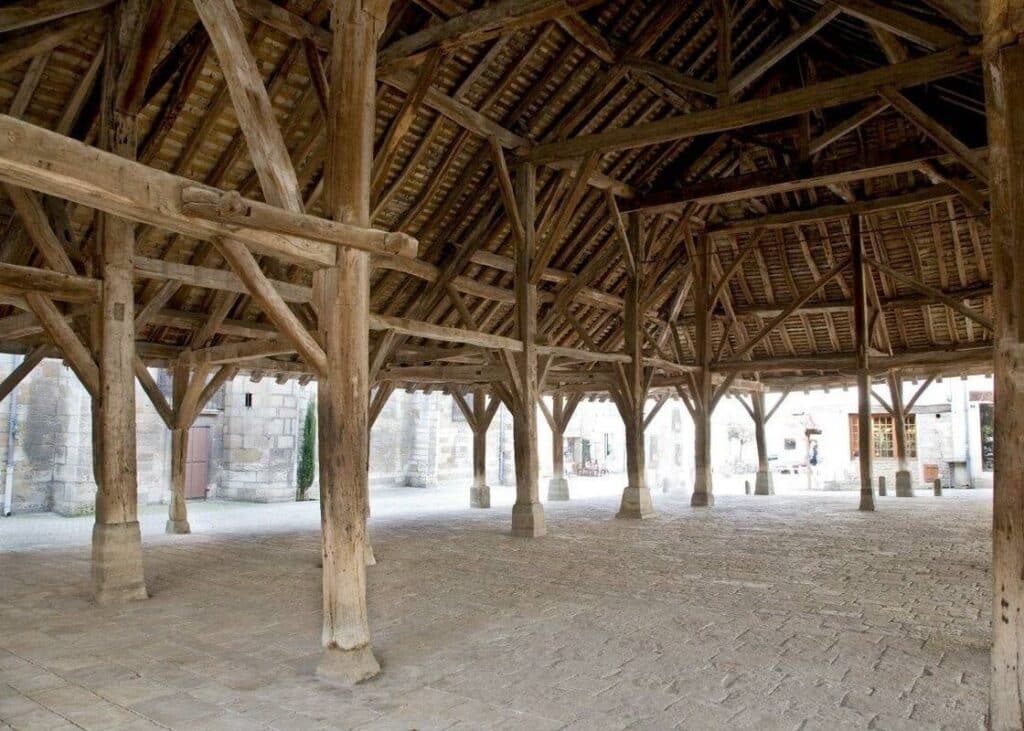


Chances are you recognize this French chateau or may have even been there once.
Chambord Castle is one of the largest and perhaps the most famous castle in France. It is located in the Loire region in the wooded nature reserve Réserve Nationale de Chasse de Chambord.
Built in the early 16th century by King François I, Château de Chambord is one of the most iconic castles of the French Renaissance. The castle combines medieval and classical Renaissance elements, creating a unique architectural masterpiece. Although there is no hard evidence, Leonardo da Vinci is believed to have been involved in the castle’s design.
François I used Château de Chambord primarily as a hunting lodge to invite large parties out for a feast or dinner. Thus, it was never built as a residential estate.
The surrounding park, covering an area of about 5,440 hectares, is enclosed by a 32-kilometer-long wall, making it one of the largest walled parks in Europe.
The castle’s roof structure is an engineering marvel, supported entirely by solid oak beams. These beams not only provide structural integrity, but also contribute to the castle’s rather special appearance.
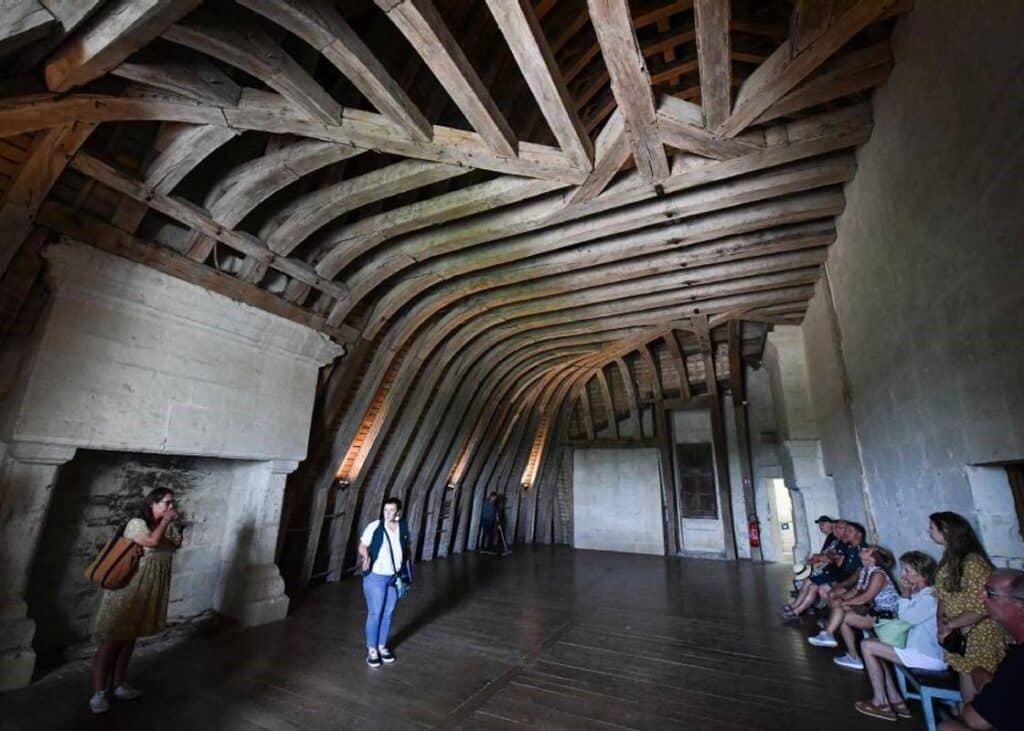



Oak trees were felled on the property in the 16th century for the construction of the domes. A few hundred years ago, it was a huge challenge for engineers and carpenters to build such an intricate structure with only wooden beams.
Château de Chambord is proof that oak beams have been indispensable in French architectural history. Should you be in the area, it is really a must-see.
Some structures endure bravely for centuries. The 14th century Ter Doest abbey barn in Flanders is the only remaining abbey building on the estate. The monumental oak structure has supported the roof of this massive building for more than 600 years. The abbey barn is over 50 meters long, which means it took over 260 m3 (cubic meters) of oak beams to build it at the time. That’s more than 10 trucks of oak wood converted.
Research has shown that the oak trees from which the historic timber structure was made must have been felled between 1370 and 1385.
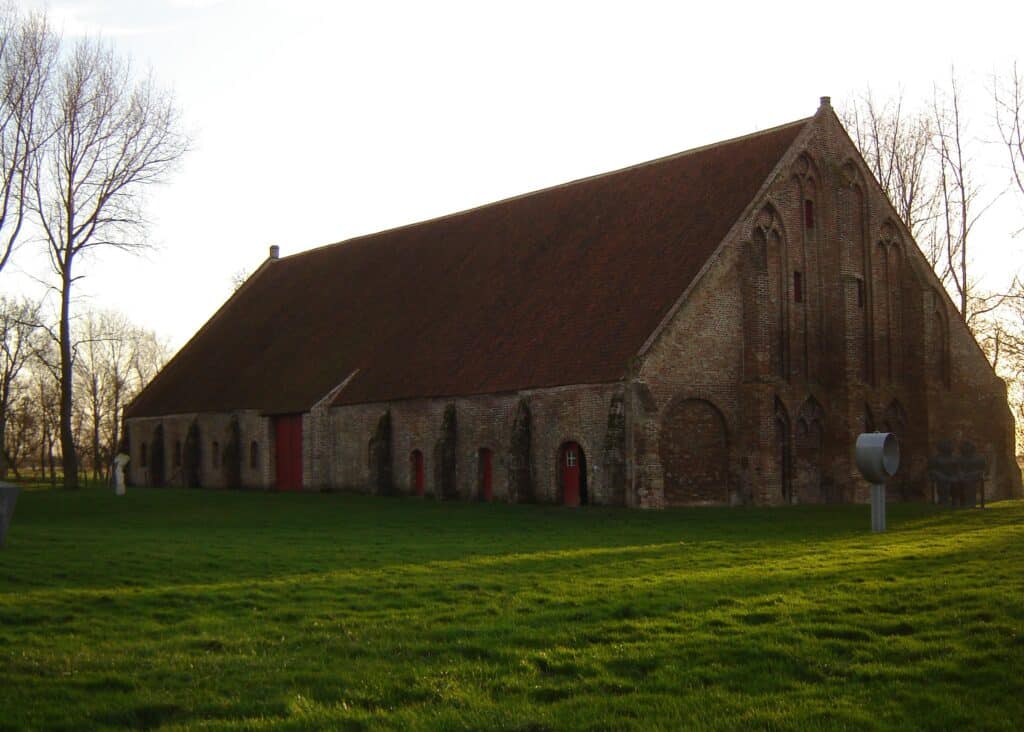
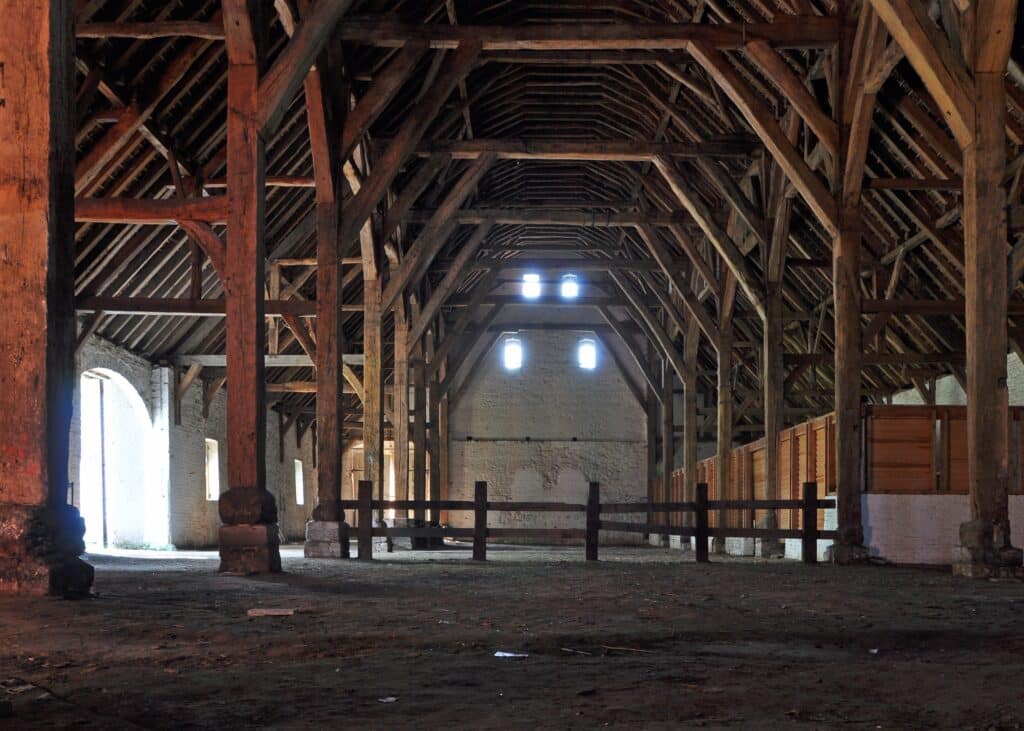
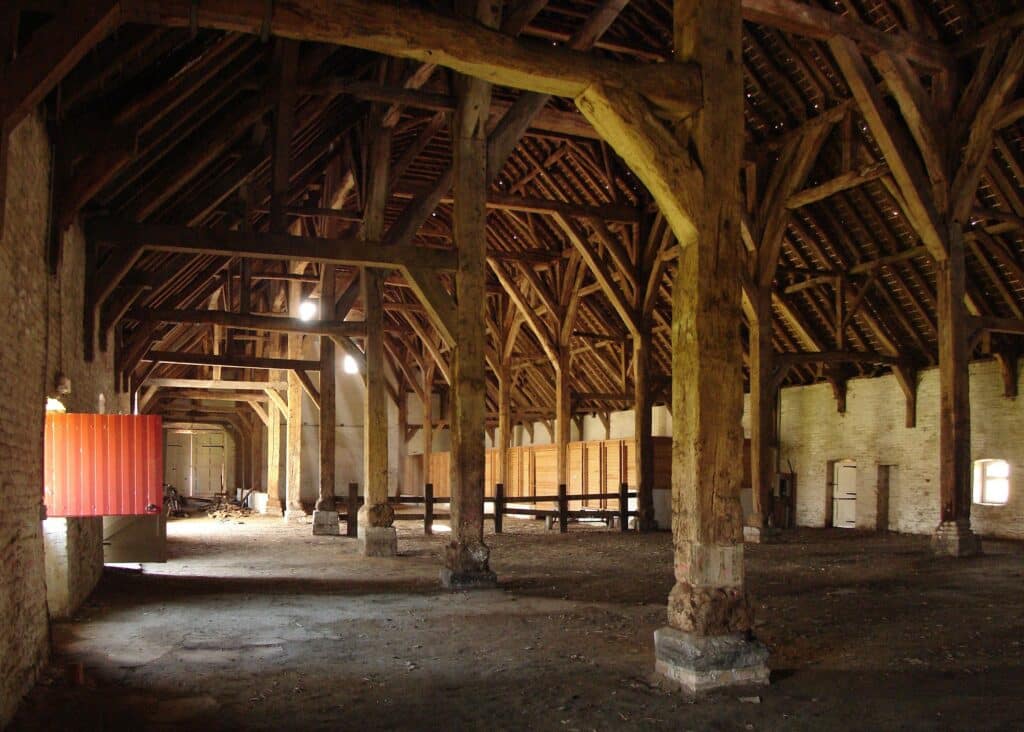

For questions or further interest, please contact contact us